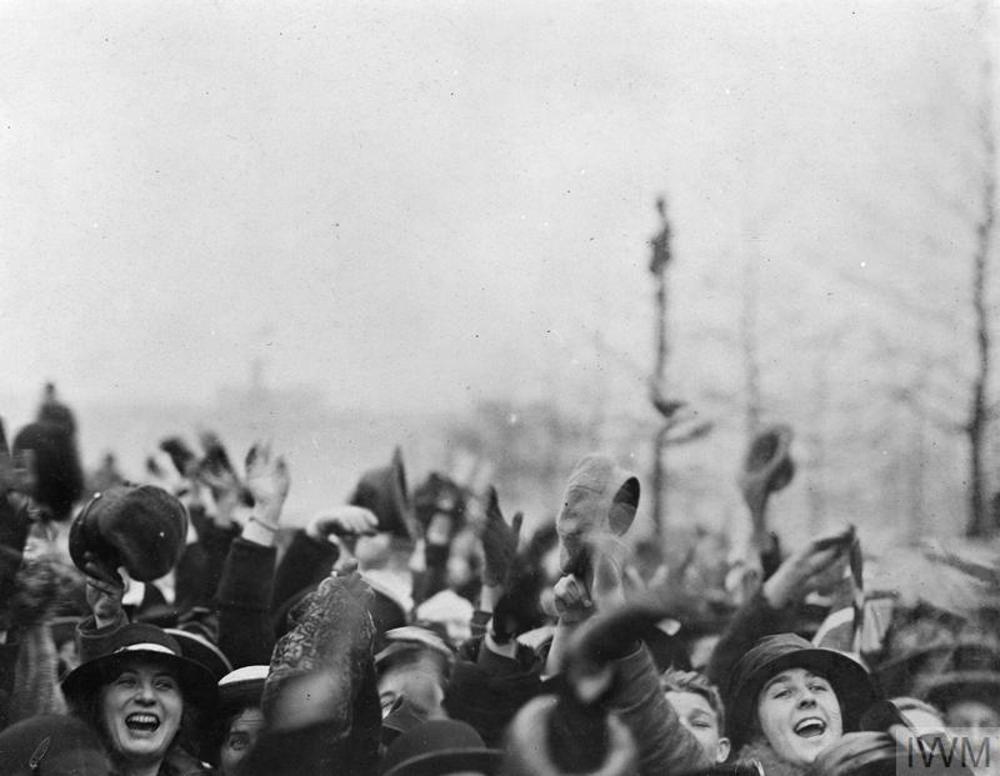27 October 2025
Interesting Remembrance Day Facts to Discover
From the story of the poppy to the origins of Armistice Day, discover some Remembrance Day facts.
WW1 Remembrance Facts

Image: Poppy wreaths are an important symbol of remembrance (Sgt Ross Tilly RAF © Crown Copyright)
Remembrance Day is one of the key commemorative events marked by the Commonwealth. It’s a day on which we come together to recognise and remember the contribution and loss of British and Commonwealth service personnel in conflicts across the world.
The Armistice: The 11th Hour of the 11th Day of the 11th Month

Image: Jubilant crowds celebrate the Armistice in London, November 1918 (IWM (Q 47852))
Remembrance Day has its roots in the final days of the First World War.
As the Allies pushed the Imperial German Army to breaking point on the fields of France and Flanders, German military leaders began to sue for peace.
An Armistice, essentially a ceasefire, was drawn up. It was signed by the German delegation in a railway carriage at Compiegne at 5 am on the morning of November 11, 1918.
The Armistice came into effect at 11 am. Fighting continued up until the last minute. Did you know the final Commonwealth combat casualty of the war died at 10:58, Canadian George Price, just two minutes before the guns fell silent?
From Armistice Day to Remembrance Day

Image: The 1931 Armistice Day ceremonies (IWM (Q 55076))
The first Armistice Day was held in the UK on November 11, 1919, one year after the end of combat on the Western Front. King George V led national ceremonies, while smaller events were held in towns and villages to remember servicemen and women lost at home and overseas.
From then on, Armistice Day became an annual tradition.
Armistice Day was originally dedicated to the memory of all fallen soldiers of the British Empire during the Great War. This changed after the Second World War.
During the Second World War, Remembrance Day was moved to the first Sunday of November so as not to disrupt the production of war materials and equipment.
After WW2 ended, a debate arose over whether to move the date back to 11 November. It was seen that this may link the ceremony too closely with the First World War rather than both massive events.
The Archbishop of Westminster suggested the second Sunday of November be renamed Remembrance Sunday in commemoration of both World Wars. The day has since come to symbolise commemoration and remembrance of all victims of all conflicts.
The Home Office approved the change, and Remembrance Sunday has existed ever since. Armistice Day remains 11 November, and ceremonies and events take place on this day around the Commonwealth every year.
Facts about Remembrance Day Poppies
John McCrae and the Poem ‘In Flanders Fields’
 Image: Captain John McCrae
Image: Captain John McCrae
Poppies are closely linked to remembrance in the United Kingdom, but the connection between poppies and the Great War was first noticed back in April 1915.
Canadian medical officer and amateur poet Captain John McCrae was serving amidst the carnage of chaos of the Second Battle of Ypres in April 1915. As his comrades fell and were buried, McRae noticed small red flowers blooming over his men’s graves.
The hardy little flowers managed to bloom in their millions on battlefields across Flanders, life enduring amid the carnage.
Inspired, McCrae took up his pen and paper and wrote his most famous poem in the back of an ambulance in a medical station outside Ypres and crafted his most famous poem. “In Flanders Fields”.
The first stanza evokes McCrae’s experiences:
“In Flanders Fields, the poppies blow
Between the crosses, row on row,
That mark our place; and in the sky
The larks, still bravely singing, fly
Scarce heard amid the guns below.”
“In Flanders Fields” is among the most influential war poems ever published, and it has had a huge influence on the iconography of remembrance.
Why did the Red Poppy become a Symbol of Remembrance?
American humanitarian Moina Michael was so inspired by McCrae’s words, she wrote a reply poem, “We Shall Keep the Faith”, in November 1918.
Michael’s work, essentially a response to “In Flanders Fields”, greatly references poppies, particularly in the second stanza:
“We cherish, too, the Poppy red
That grows on fields where valor led;
It seems to signal to the skies
That blood of heroes never dies,
But lends a lustre to the red
Of the flower that blooms above the dead
In Flanders Fields.”
Michael also vowed to always wear a red silk poppy in honour of the dead of the First World War and began campaigning for the poppy as the international symbol for remembrance. The National American Legion adopted the flower as its official remembrance symbol in 1920.
Michael’s campaign reached and touched Frenchwoman Anna Guérin. Anna began making felt poppies for sale to raise money for disabled veterans and travelled to London in 1921 to show her wares.
While in London, Guérin met Field Marshal Sir Douglas Haig. Haig was Commander-in-Chief of the British Expeditionary Force from 1915 onwards and a pioneer of veterans’ welfare.
After meeting with Guerin, Haig was convinced of the poppy’s potency as a remembrance symbol. Subsequently, the newly formed Royal British Legion adopted the poppy for its annual remembrance campaign in 1921.
The First Paper Poppies and Fundraising Tradition

Image: The old-style RBL Poppy. This design has been taken out of circulation in favour of a modern, sustainably-produced version (Mike Weston ABIPP © Crown Copyright)
The Royal British Legion bought 9 million of Guérin’s silk poppies. They sold out almost immediately. Now, the RBL sells over 40 million poppies every year.
From that first RBL remembrance campaign, the Poppy Appeal has become an annual fundraising tradition. You’ll see the red paper poppies pinned on the chests of people from all walks of life.
The first poppies weren’t paper; they were made from red silk, with a metal wire for the stem and bitumen centre. Four versions were produced for different budgets, including a cardboard poppy for children.
Over the years, the design and material of the poppy have evolved. For several decades, the design didn’t feature a green leaf, for example. This was reintroduced in 1987.
The Royal British Legion changed the poppy again in 2023. This latest version is made entirely of paper from renewable fibres, such as coffee cups. It is 100% completely recyclable.
The funds raised by this annual tradition go towards supporting armed forces veterans and their families. The Royal British Legion, however, does not maintain the war cemeteries and memorials commemorating the Commonwealth’s war dead from the two World Wars. This is the work of the Commonwealth War Graves Commission.
Poppyscotland organises Scottish poppy appeals. The design is different to the RBL poppy, featuring four petals and no leaf. Poppyscotland distributes 2-3 million poppies annually.
Poppies Beyond the UK
Poppies are a symbol of remembrance across the Commonwealth, particularly in Canada, Australia, and New Zealand.
New Zealand’s Poppy Day does not fall in November. Instead, the campaign, organised by the Royal New Zealand Returned and Services Association (RSA NZ), falls in April.
This was because the original shipment of poppies ordered by the New Zealand Returned Soldiers Association in 1921 arrived too late for Armistice Day. Instead, it was decided to hold back the poppies until the day before ANZAC Day. Today, over a million poppies are sold each April in New Zealand.
Canadian and Australian poppy appeals occur around Remembrance Day, helping raise funds for veterans of their respective armed services. Millions are sold annually. The Royal Canadian Legion also supplies poppies for Caribbean nations.
A poppy campaign also takes place in South Africa and has gained prominence since a 2011 visit by King Charles III, then the Prince of Wales. The king wore a red poppy lapel badge, which led to a spike in national interest and enquiries on where to get a poppy. Now, the South African Legion has a very busy remembrance period on its extensive poppy appeal.
Poppies are mostly a Commonwealth symbol of remembrance. France, for example, has adopted the blue cornflower, “le bleuet” as its remembrance symbol, although it is generally not as widely worn as poppies in the UK, for instance.
Remembrance Sunday Facts
When is Remembrance Sunday?
Remembrance Sunday is held on the second Sunday of November each year.
Rather than being linked directly to the Armistice, this allows Remembrance Day to focus on all victims of all conflicts, past, present, and future, instead of an overt connection to the First World War.
The Cenotaph Ceremony in London

Image: Troops parade past the Cenotaph on Remembrance Sunday (Owen Cooban © Crown Copyright)
The National Service of Remembrance, also known as the Cenotaph Ceremony, is held each Remembrance Sunday at the Cenotaph in Central London.
It has taken place since November 1921 and is largely unchanged from the original service.
Ceremonies open at precisely 10:36 am with a variety of national tunes and solemn music, played by military bands and pipes, before a short religious service is held.
A two-minute silence occurs at 11.00 am at the chimes of Big Ben.
Following this, wreaths are laid by the King and members of the royal family, senior politicians representing their respective political parties and High Commissioners from the Commonwealth.
A march-past of 10,000 veterans, known as the Cenotaph Parade, follows the wreath-laying ceremony.
At this time, thousands of ex-servicemen and select representatives from civilian organisations related to the armed forces, such as the Commonwealth War Graves Commission, march past the Cenotaph to take the salute from a member of the Royal Family, concluding the ceremony.
A Two-Minute Silence for the Fallen
The Two-Minute Silence occurs nationwide at 11.00 am on both Remembrance Sunday and Armistice Day.
King George V conceived the silence so "the thoughts of everyone may be concentrated on reverent remembrance of the glorious dead".
11 o’clock was chosen as this was when the Armistice came into effect on the Western Front, bringing a halt to four years of fighting and killing on the battlefields of France and Flanders.
Facts About Remembrance Day Traditions
War Memorials Around the World

Image: Members of the Kenya Armed Forces laying a wreath for Remembrance Day, 2025 (Guerillas of Tsavo)
Commonwealth War Graves cemeteries and war memorials host Remembrance and Armistice Day ceremonies during Remembrance season.
At sites such as Brookwood Military Cemetery in the UK, Abuja War Cemetery in Nigeria, and Chung Kai War Cemetery in Thailand, wreath-laying and commemorative services take place. These are attended by local dignitaries, ambassadors, representatives of our member Governments, and veterans, among others.
We maintain 23,000 locations in 150 countries and territories around the world. Over 1.7 million men and women are commemorated by Commonwealth War Graves, including civilian war dead, the men of merchant and fishing fleets, nursing services, and members of the armed forces.
Remembrance Across Nations

Image: Schoolchildren attend a Canadian Remembrance Day ceremony at Sai Wan War Cemetery, Hong Kong
Remembrance Day is closely connected to the shared history of the United Kingdom, but it also has global significance. As we’ve mentioned earlier in this blog, the Commonwealth nations all have their own Remembrance Day traditions.
For some nations, Remembrance Day is the chief national day of commemoration, such as in the UK. Even so, neither Armistice or Remembrance Day is a public holiday in the United Kingdom, while it is in Canada, showing again the difference in observations of this public event.
In others, other memorial days take precedence, such as in Australia and New Zealand where ANZAC Day is the leading day of remembrance.
November 11 is also an important date in the commemoration calendar for non-Commonwealth states.
Armistice Day is a public holiday on November 11 in France and Belgium, for example, complete with gun salutes, two-minute silences, and parades.
What makes Remembrance Day special is the connection it fosters between nations. As Commonwealth War Graves cemeteries and memorials attest, men and women from around the world fought, served, and fell alongside each other in the World Wars.
With so many events taking place at our worldwide sites for Remembrance Day, this time of year is the perfect time to reflect on how so many from so many different nations came together to work towards a common goal.
Modern Remembrance: Education and Reflection
Today, Remembrance has taken on new forms. Digital exhibitions and tributes, such as Australia’s digital poppy, allow us to engage with commemoration in different media.
Commonwealth War Graves is committed to reaching new generations. We have created a suite of Education Resources for in and outside the classroom, designed to engage with students and learners of all ages on the importance of our work, commemoration, and remembrance.
The Commonwealth War Graves Foundation, our charity arm, funds countrywide and international education and outreach projects. Together, we can ensure the sacrifices of those in our care are never forgotten and their stories are remembered for evermore.
Remembrance is For Evermore
This year, with increased tensions around the world and political and social upheaval, it’s never been more important to remember and recognise the sacrifices of those lost in the World Wars.
The experiences of those who served and fell in these world-changing events shaped the world we live in today.
Learn more about our work, this year’s commemorative events, and the importance of remembrance, by clicking here.
This Remembrance Day Share Every Story, For Evermore with Commonwealth War Graves
For Evermore: Stories of the Fallen is our online resource for sharing the memories of the Commonwealth’s war dead.
It’s open to the public to share their family histories and the tales of the service people commemorated by Commonwealth War Graves so that we may preserve their legacies beyond just a name on a headstone or a memorial.
If you have a story to tell, we’d love to hear it! Head to For Evermore to upload and share it for all the world to see.

